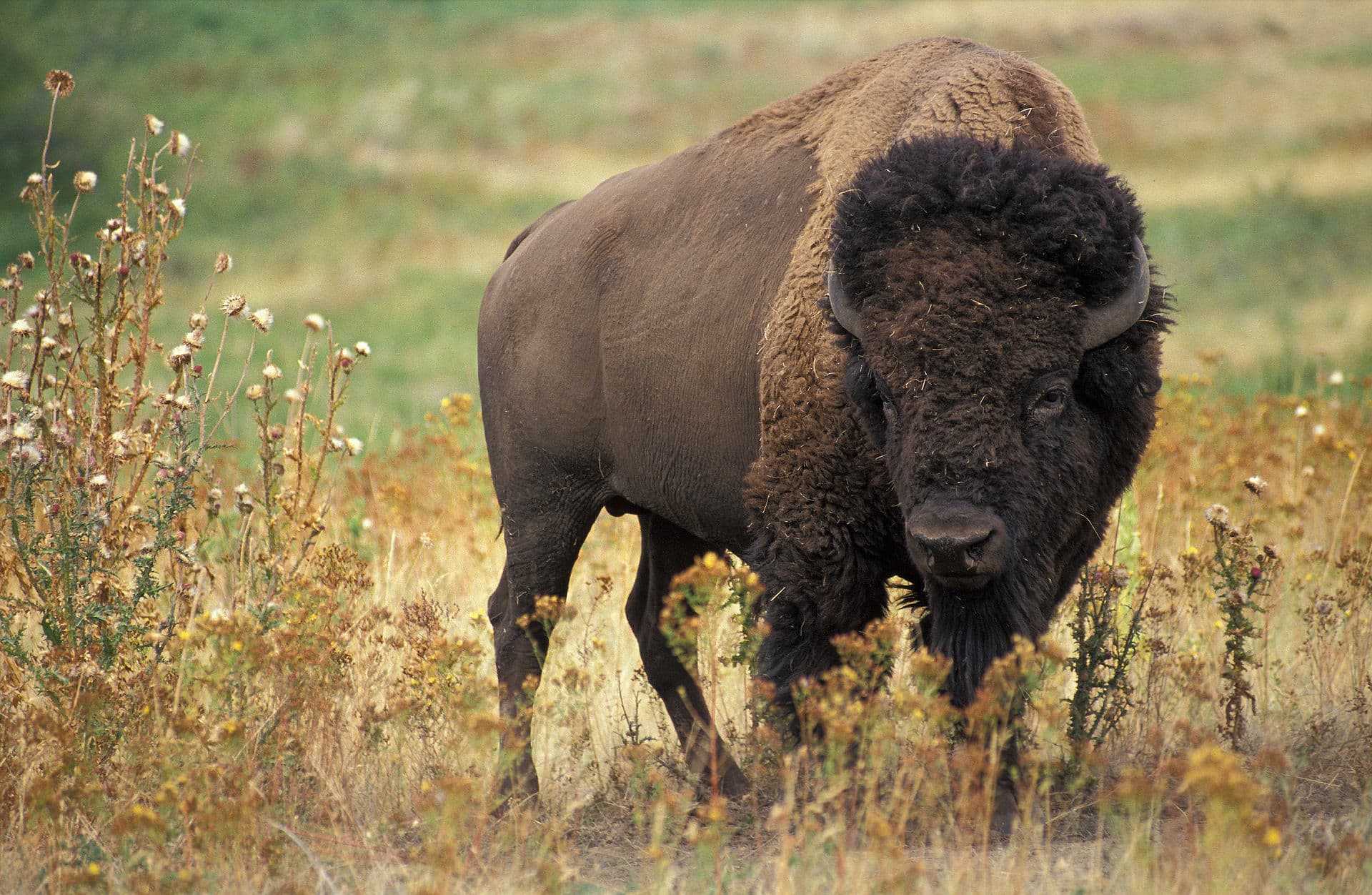Are Hunters the Solution to the Grand Canyon’s “Beefalo” Problem?
OutdoorHub Reporters 03.02.15

They look like buffalo, act like buffalo, and certainly smell like buffalo, yet the hybrids known today as “beefalo” still have domestic cattle DNA in their genetic makeup. These large, lumbering creatures are left over from an ambitious project more than a century ago to raise buffalo for beef production, but now the creatures are causing headaches for wildlife officials.
Beefalo, or bison mixed with cow DNA, have proven to be a serious setback for wild bison conservation. Perhaps even more pressing, the animals are now rampaging through Grand Canyon National Park, pushing out native species and causing widespread environmental damage.
While the Arizona Game and Fish Department (GFD) is able to manage beefalo outside of the park with hunting, the Grand Canyon itself is off-limits to hunters, and the beefalo population is growing by as much as 50 percent every year. In 2012, park officials estimated that there were 400 of the hybrid animals in the park. Today there are 600.
“Unfortunately these extremely large grazing animals are fouling sensitive and critical water sources, trampling and removing delicate vegetation, and compacting fragile soils,” stated the National Park Service on its website. “Grand Canyon National Park is working closely with federal and state managers who are determined to reduce or eliminate the bison’s negative impacts to park resources.”
Beefalo were originally crossbred in the late 1880s by a number of American scientists and ranchers. One of them, Charles “Buffalo” Jones, intended to create a more robust breed of cattle after watching thousands of cows perish in a Kansas blizzard in 1886. The hybrid animals proved to be fertile and produced tender, low-fat meat. Yet the experiment was not economically successful and as a result, a herd of the animals were left under the control of the Arizona GFD. The beefalo were given their own range east of park to minimize contact with other wildlife, but the wandering animals eventually strayed into the Grand Canyon.
“It’s quite amazing. Frankly I’ve never seen this many bison in one view in all the years I’ve worked here,” researcher Tom Sisk told the BBC. “It was just a few years ago people were writing stories about the ‘ghost bison’ of the Grand Canyon. They’d go out for days and see the impacts but never see an animal. So we really are seeing a dramatic increase in the population size.”
Enough so that park officials are considering measures that could allow hunting. The Grand Canyon beefalo herd does venture out of the park on occasion, but often only when it is in the closed season. Some experts believe that the animals may have even recognized the Grand Canyon as a refuge from hunters, especially since the animals have a tendency to move into the park following the start of hunting season.
Not everyone approves of hunting the bison. Many Native American groups have publicly criticized any proposal to hunt bison, and other advocates have called for non-lethal methods instead. For now, park officials are warning visitors that these animals are anything but domesticated. In addition to looking much more like a wild buffalo than cattle, Grand Canyon’s beefalo will also act aggressively to protect themselves—resulting in a few dented cars for tourists passing through.
“Bison may appear tame and slow, but they are unpredictable and dangerous,” park officials said. “They weigh up to 2,000 pounds (900 kg) and sprint at 30 miles (48 km) per hour, three times faster than you can run. For your safety, you must stay at least 75 feet (23 meters) from bison.”

